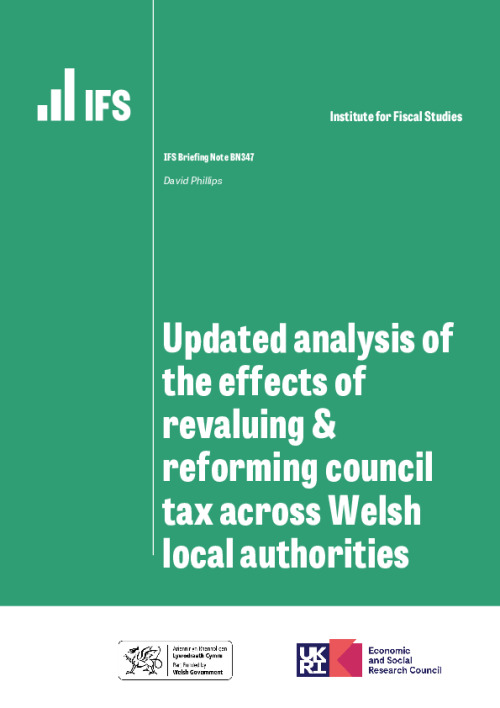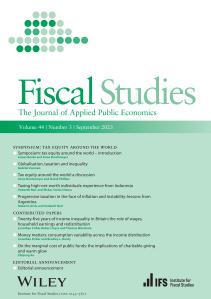In April 2020 we published analysis of the impact of revaluing and reforming council tax in Wales on different local authority (LA) areas and different types of households (Adam et al (2020)). This analysis was based on estimated property values as of Q1 2019. In the case of the LA-level analysis these estimates were in turn based on property-level estimates as of Q4 2018, uprated in line with Land Registry estimates of the average change in property value by LA between Q4 2018 and Q1 2019.
Since then there have been significant further changes in property values, which have varied across Wales. This note therefore presents updated analysis of the impact of revaluing and reforming Welsh council tax on the different LA areas of Wales. In particular it updates a number of Tables and Figures in Adam et al (2020), using:
- Land Registry estimates of the change in average property values by LA area between Q1 2019 and Q1 2022 to project forward the property-level value estimates originally estimated, and;
- Information on council tax rates, and the share of properties by LA and by band subject to different exemptions, discounts and premiums, and eligible for the council tax reduction scheme (CTRS) as of 2021-22.
We use average LA area average price changes since Q1 2019 rather than estimated property-level changes in prices because Valuation Office Agency (VOA) data was unavailable for the purposes of this updating exercise.[1]
Two main caveats are worth noting upfront given this method.
First, because we are using LA area average changes in property values to project forward property-level price estimates for over 3 years as opposed to just 3 months as in our original report, our updated estimates will be less accurate for Q1 2022 than our original estimates were for Q1 2019. In addition, the Land Registry’s estimates of average property prices are likely to have been at least somewhat affected by a change in the mix of properties transacting over the last three years as people have sought larger properties, with larger gardens, in more rural and suburban areas. However, it is highly likely our updated estimates will give a better picture for Q1 2022 than our original estimates would, given the big geographical differences in changes in property values seen over the last three years. We have also tested the sensitivity of results to using average values for Q4 2021 and Q1 2022, to ascertain whether short-term volatility in Land Registry estimates of average property prices has a significant effect on results.
Second, because our underlying data on the number of properties and their values as of Q4 2018 is based on an extract of VOA data from spring 2019, our analysis will not take account of any additions, demolitions or changes in bands of properties over the last 3 years. We do however take account of changes in tax rates, and the share of properties subject to exemptions, discounts, premiums and the CTRS, which are likely to be of more importance than additions and demolitions over this period.
Full information on our methodology for estimating property values as of Q4 2018 and simulating reforms can be found in Section 3 and Appendix A of Adam et al (2020).
[1] The data provided by the VOA was for exclusive use in the original project.










